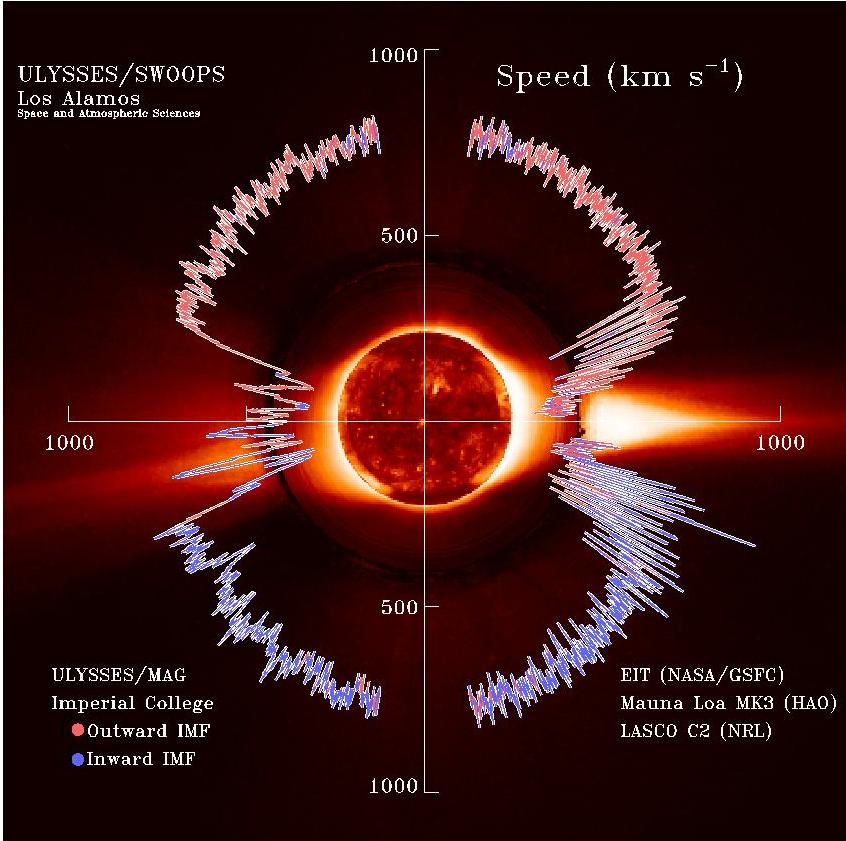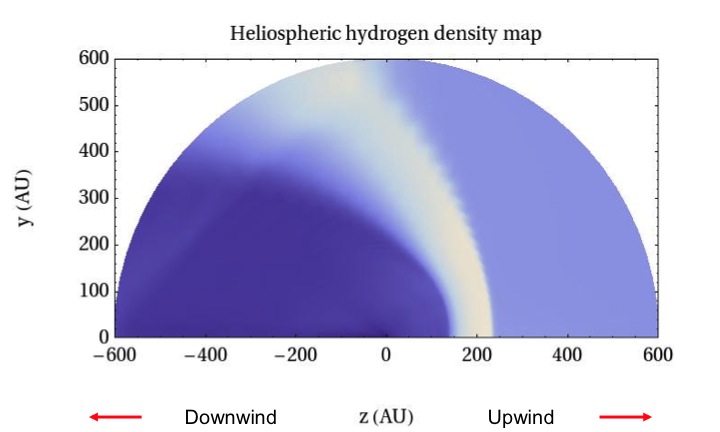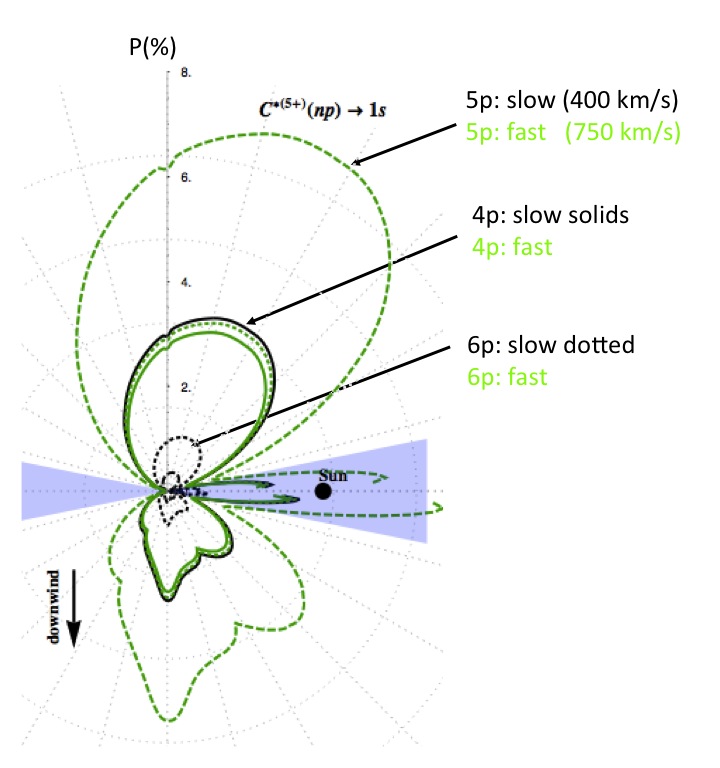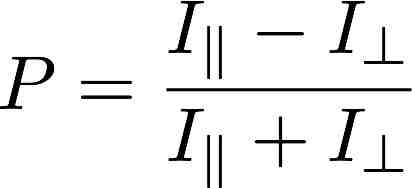 Atomic, Molecular, and Optical (AMO) physics is a natural field to
study astrophysical phenomena, since we receive our information about
the universe mainly through electromagnetic waves emitted or absorbed
by AMO systems, such as atoms, molecules, or plasmas, that are sensitive
to their environment (local density, temperature, magnetic field, etc.).
Atomic, Molecular, and Optical (AMO) physics is a natural field to
study astrophysical phenomena, since we receive our information about
the universe mainly through electromagnetic waves emitted or absorbed
by AMO systems, such as atoms, molecules, or plasmas, that are sensitive
to their environment (local density, temperature, magnetic field, etc.).
Our group is involved in the study of the solar wind interacting with
various environments in our solar system. The Sun ejects charged particles
with speeds of about 400 km/s (roughly 1 million miles per hour) high enough
that they can escape its gravity. This
stream of plasma is called the solar wind. It is made mostly of electrons
and protons, but also of stripped heavier nuclei, such as
4He2+
(or alpha particle), or C6+ and
O8+ ions, released from the upper
atmosphere of the Sun in directions. Their kinetic energy is usually
between 1.5 and 10 keV. The figure beside (from NASA) shows the variability
of the solar wind as measured by the Ulysses spacecraft.
Although it is always directed away from the Sun, the solar wind
speed, density, and composition change. For example, its speed is high
(800 km/s) over coronal holes and low (300 km/s) over streamers.
The solar wind flows outward and interact with other bodies in our solar
system. Its interaction with Earth magnetic field and atmosphere is
responsible for aurora (northern and southern lights), and can lead
to geomagnetic storms that affect Earth's magnetic field lines, creating
strong currents in power grids. It also explains why plasma tails
of comets always point away from the Sun. The solar wind moves
supersonically to great distances, filling a region known as the heliosphere,
an enormous bubble-like volume surrounded by the interstellar medium
(see figure from NASA). This occurs in other star systems as well.
 One of the process occuring when a positive ion from the solar wind collides
with a neutral atom/molecule (e.g., hydrogen or helium from the heliosphere, or
oxigen or nitrogen from a planetary atmosphere, or water from a comet) is
the capture of an electron from those targets. The resulting ion has one less
positive charge, and is often highly excited. Its de-excitation into more
deeply bound levels can lead to the emission of X-ray photons. This can
be summarized by
One of the process occuring when a positive ion from the solar wind collides
with a neutral atom/molecule (e.g., hydrogen or helium from the heliosphere, or
oxigen or nitrogen from a planetary atmosphere, or water from a comet) is
the capture of an electron from those targets. The resulting ion has one less
positive charge, and is often highly excited. Its de-excitation into more
deeply bound levels can lead to the emission of X-ray photons. This can
be summarized by
Aq+ + B → A*(q-1)+ + B+,
where the solar wind ion Aq+ has a charge +q before
the charge exchange with the neutral atom B, and a charge +(q-1) after the exchange.
It is then in an excited state labeled by *.
We performed calculations of the charge exchange cross section
σch for fully stripped
C6+ and
O8+ ions with hydrogen atoms.
Our goal is to study the X-ray emission from the resulting
excited solar wind ion, especially the polarization of the emitted
photons. The X-ray polarization gives information about the local
environment in which the charge exchange took place, such as
the distribution of the solar wind plasma and its velocity, an the
local density and distribution of neutral gases. Measuring the
polarization of X-rays would act as a probe to know more, not only
about the propagation of the solar wind, but also about the environment
where charge exchange takes place.
 We are interested in knowing if X-ray emission from charge exchange between
the solar wind and the heliospheric hydrogen atoms can give information
about the heliosphere bubble. We used the density of hydrogen atoms
shown beside, which indicates that the density of hydrogen atoms is
larger "upwind" (i.e. the direction into which the solar system is moving
against the insterstellar gas) than "downwind" (opposite direction), with
a "croissant" of higher density at around 200 AU (AU = Astronomical Unit, or
the average Earth-Sun distance). The density is lower density closer to the Sun
because the solar wind pushes the neutral atoms away. We note that this
distribution also fluctuates depending on the Sun activity, with the solar wind pushing
more or less the hydrogen atoms outward.
We are interested in knowing if X-ray emission from charge exchange between
the solar wind and the heliospheric hydrogen atoms can give information
about the heliosphere bubble. We used the density of hydrogen atoms
shown beside, which indicates that the density of hydrogen atoms is
larger "upwind" (i.e. the direction into which the solar system is moving
against the insterstellar gas) than "downwind" (opposite direction), with
a "croissant" of higher density at around 200 AU (AU = Astronomical Unit, or
the average Earth-Sun distance). The density is lower density closer to the Sun
because the solar wind pushes the neutral atoms away. We note that this
distribution also fluctuates depending on the Sun activity, with the solar wind pushing
more or less the hydrogen atoms outward.
Since the detection of X-rays is obtained using satellite observatories, such
as Chandra
or XMM-Newton observatories, the
signal detected can be from any event along the line-of-sight of the
satellite. The intensity of the X-ray emission is obtained by integrating
over the line-of-sight (LOS)

 ,
,  ,
,
We computed P within the ecliptic plane for X-rays induced in
charge-exchange collisions of fully stripped solar wind (SW) ions
C6+ and
O8+ with the heliospheric hydrogen atoms.
The results were obtained as a function of SW ion velocities, including a
range of velocities corresponding to the slow and fast SW, and coronal
mass ejections. We found the polarization of charge-exchange
X-rays to be between 3% and 8%, depending on the line-of-sight geometry,
SW ion velocity, and the selected emission lines.
The figure beside shows the angular dependence of the polarization of X-rays
emitted in a single de-excitation from the 4p, 5p, and 6p
excited states to the 1s state. These results are for
C6+ +
H(1s) → C5+(np) +
H+, followed by
C5+(np) → C5+(1s)
+ γ.
The polarization P as a function of the angle of observation
(increasing counterclockwise) is expressed as
a radius vector, with the axis for π/2 (LOS in the upwind
direction) indicated.
The blue cones indicate regions within ±10° of the Sun
(right side) or directly opposite (left). In this plot, the results
for slow (black) and fast (green) SW ions illustrates the variation
of P. By measuring the polarization P of X-rays, we can get a diagnostic
of the solar wind conditions throughout the heliosphere. We obtained
similar results for O8+.
We are extending this work to other systems, such as X-ray emission
from solar wind interacting with water (H2O)
which has been detected from comets. This is done in collaboration
with Prof. Vasili
Kharchencko .
We are also involved in computing chemical reaction rate relevant to
the early universe, such as H2 + D →
HD + H, which gives a molecule with a permanent electric dipole
moment crucial to the cooling of large primordial clouds and the formation
of the first generation of stars.